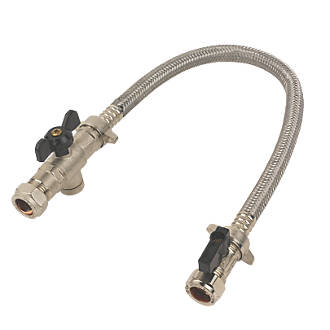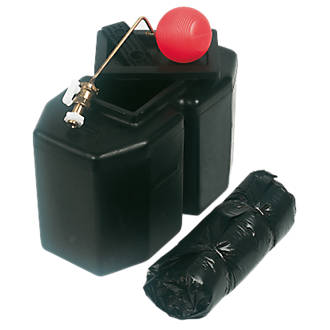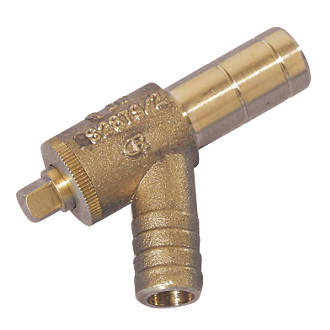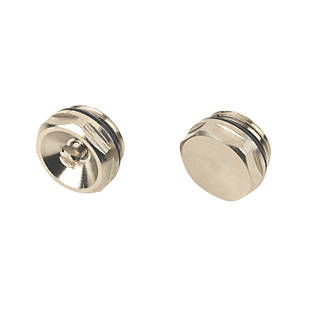How to drain the central heating system

Beginner’s Guide
It is clear that you have to maintain your heating system, in order to make its’s lifespan longer. Also, your heating system is responsible for a huge part of your bills, and for the comfort of your home in winter. MML Plumbing has prepared this step-by-step guide to help you understand how the system works. With the right tools and know-how, anyone can drain a central heating system, however, if you would prefer professional, and insured help, get in touch with one of our heating experts.
Why drain a Central Heating System is important?
Sometimes it is necessary when you’re up to remove a radiator, fit a new one, or when you’re about to add some inhibitor to your system. And more importantly, in few cases when the boiler repair works can’t be done without draining the whole system down. Otherwise, it is good to do it yearly, to maintain your whole system and do some radiator flush.
When should you drain your central heating system?
You should drain your central heating system to maintain it yearly. By not draining it, you risk the system having issues, you can have build up rust in your radiators, and issues cost a lot of money.
We recommend a small system clean or wash during the system draining.
How-to guide -Step-by-step instruction, how to drain your central heating system
The Central heating system is one of the main parts of your home, as it gives you hot water and heating. When we say hot water, it means that the central heating water will also heat up the hot water cylinder indirectly. There is a coil in the cylinder and when the two-port valve will open to the hot water side, the central heating water starts to heat the cylinder.
Here is our step by step guide, how to do it properly. However, we always recommend calling a professional to do so.
#1 Switch off your system
Before you start draining, switch off the system as a safety measure. Turn off the boiler fuse switch spur. Then wait until everything cools down, including pipes, radiators.
#2 Turn off the water supply to the boiler


Before draining the central heating system, if you have an old conventional or regular boiler, in the loft you have to turn off the water supply. This will prevent the water from entering the system while you work. To turn off the water, turn the stop tap in front of your house or in the loft next to the feed and expansion tank.
#3 Find the radiator with the drain-off valve

Locate the radiator in your home with the drain-off valve. This is usually on the lowest point of the radiators or pipework. Usually, the draincock can be found close to the ground floor radiators. When you have located the draincock, attach a hosepipe to it, using a jubilee clip to secure the hosepipe, and drain the water outside. If you choose to use a bucket, make sure you shut the valve every time.
If you use a hosepipe, remember, there are chemicals in the inhibitor, so locate the hosepipe somewhere away from plants or garden vegetables.
If you are unlucky and you don’t have a draincock, you have to open the radiator thermostatic valve nut a bit, and slowly drain down the water from the system. This is a long and slow process.
#4. Start bleeding your radiators (bleed valves)

Now it’s time for the actual work. Now you can bleed the radiators. Open the draincock and in meantime open the top floor radiator bleed valve. Make sure first you open the radiator bleed valve which is at the highest point of the system. You have to introduce air to the system so you can drain the water. Wait around 10-15 minutes before opening the valves downstairs. If water starts to come out through the bleed valve, you have to wait for more till you can open the valve.
This process can take up to an hour, depending on the size of the system you have.
#5 Complete the process
After the water stops draining, you have to close all the radiator bled valves, so when you fill the system again don’t end up water spraying everywhere.
Close the valve on the radiator you started with and remove the hosepipe. Leave a bucket underneath in case of a little remaining water might still drip out.
#6. How to refill your central heating system?
Start by closing all the valves you’ve previously opened, as well as the drain cock on the radiator. Let the water fill up the system. In an open vented system open the shut valve next to the feed and expansion tank and let the tank start to fill up. Once the tank is completely filled up, start bleeding the radiators downstairs. Then, do the same upstairs. Your system should be complete.
#7 Important notes
Add an inhibitor to your system to limit corrosion and limescale build-ups. You can add the inhibitor through the f and e tank, or fill one radiator with inhibitor before the system fill process.
Check if you’ve tightened all the valves.
Switch on the power supply.
Wait for the system to heat up and bleed the radiators once more.
Make sure joints and valves are closed, and there are no leaks.
But what if I don’t have a drain valve? Let’s see how to Drain Central Heating System Without Drain Valve.
If you don’t have a drain valve, you have to start with #1 and #2, which is to switch off your system and close the water supply to the boiler.
Step 3. Isolate the radiator from the system
Close the two valves and rotate the regulator in a clockwise direction. Then remove the plastic cap off of the lockshield and close the valve up tightly using pliers.
Step 4. Open up the bleed valves
Open the bleed valves to let the air out of your system, as this will speed up the process of draining.
Step 5. Loosen the nuts and drain
- Release the coupling nut on the regulator side.
- Place a bucket and old rags under it and have an absorbent towel on hand.
- With the help of a spanner, rotate the nut counterclockwise until the water starts pouring into the bucket.
Once the radiator is empty, take the radiator off the wall carefully, as the water in it can stain. To prevent that, make sure both radiator sides are drained.
Are you still struggling? MML Plumbing Ltd will help.
Call us on 0208 355 0840 to speak with one of our senior engineers who’ll help you solve any boiler and heating system problem. You can email us at any time for helpful advice from our heating experts.
Additional advice
As you can see, to complete the draining process, and completely drain your central heating system is not that hard for someone with experience, and the right tools. Anyway, if you still do not fully understand how to drain a central heating system by yourself and don’t want to risk causing any damage to your heating system, better contact a professional heating expert. Certified and trained Gas Safe engineers will know how to complete the job and ensure that your home, radiators, pipes and fittings won’t get damaged. Remember, prevention is better than cure.
Technical words
Bleed valves: A bleed valve is a valve that typically utilizes a threaded bleed screw to open or close.
All the radiator valves ( radiator valves): The different types of TRVs are: Thermostatic, Manual, Dual-Fuel, Traditional, Modern, Straight, Angled, Corner.
Drain off valve: This single type A 15mm plain shank drain off valve (also known as a drain cock or draw off cock) from Evolve is suitable for use on either hot or cold systems. The plain shank fitting is usually used on a tee to enable draining of pipework. (bleeding process)
Combi boiler: A combination or ‘combi’ boiler is both a high-efficiency water heater and a central heating boiler in a single compact unit. Combi boilers heat water directly from the mains when you turn on a tap, so you won’t need a hot water storage cylinder or a cold water storage tank in the loft.
Conventional heating system: Coldwater from the tank is heated up in the hot water storage cylinder, which feeds into the household’s taps and faucets.
Draining central heating: you can find all the information about this process above, through the radiator valve, or if you don’t have a draining valve.
DO NEED A PLUMBER OR GAS ENGINEER?
If you are looking for a solution for your heating system problem, contact us today and our professional engineer will find a solution for your problem!
The post How to drain the central heating system appeared first on MML Plumbing Ltd.
from MML Plumbing Ltd https://ift.tt/2Zjvcmj
via IFTTT

No comments:
Post a Comment